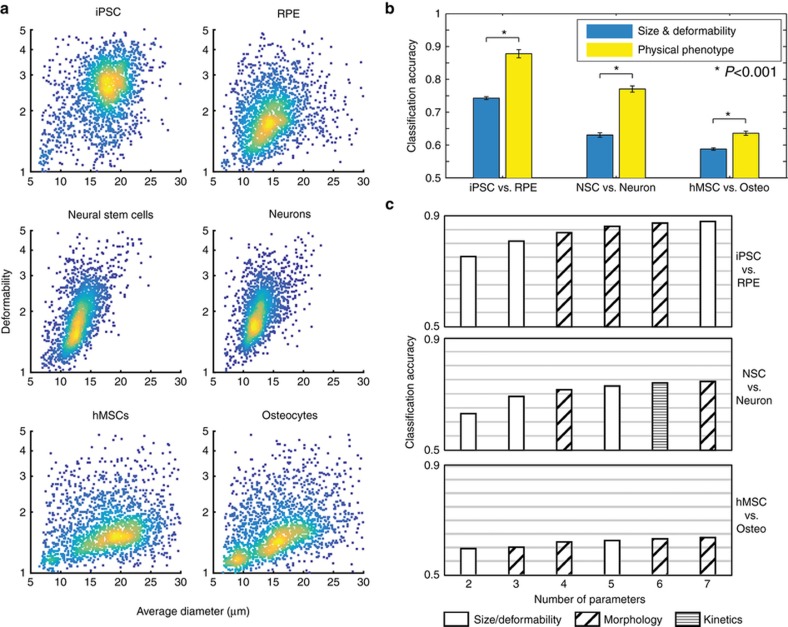Figure 2.
Cell classification improves with morphology and kinetics parameters. (a) Scatter plots of cell size and deformability for induced pluripotent stem cells (iPSCs), retinal pigmented epithelial cells (RPEs), neural stem cells (NSCs), neurons, mesenchymal stem cells (hMSCs), and osteocytes. Each pairing (iPSC/RPE, NSC/neuron, hMSC/osteocyte) represents a differentiated cell type and its progenitor stem cell. In the cases of NSCs vs. neurons and hMSCs vs. osteocytes, there are not clear changes in cell size and deformability, suggesting that classification of these cell types based on these parameters alone would be difficult. N=5000 for each scatter plot. (b) Classification accuracies of support vector machines (SVMs) trained on each of the three cell type pairs. In each case, SVMs were supplied with either the full physical phenotype or just size and deformability. In all cases, the addition of parameters improved classification accuracy. (c) SVMs were trained starting with size and deformability followed with the sequential addition of five additional parameters from the four categories (size, deformability, morphology, and kinetics parameters). The parameters are listed from left to right in order of importance in improving classification accuracy in a cumulative manner. In all cases, SVMs were trained using 5000 randomly sampled cells of each cell type.

